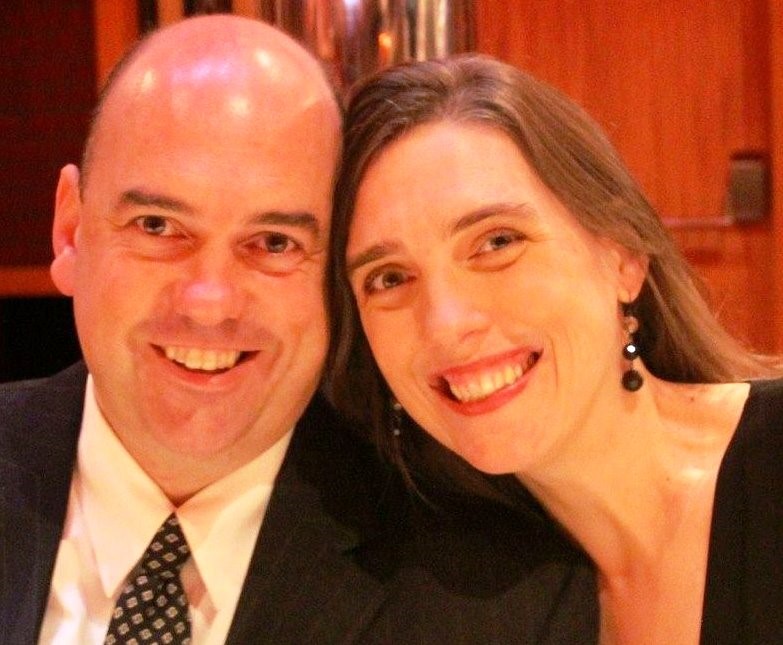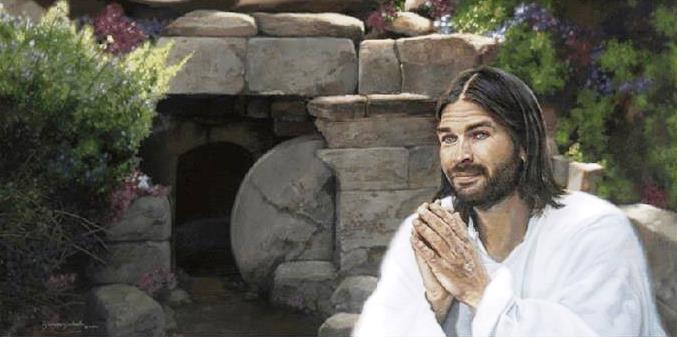Dear Pastors and Ministry Leaders:

I hope you like the new format for Equipper. It’s formatted to be read on a wide array of digital devices including computers, tablets and smart phones. This format allows greater flexibility to link to outside articles, embed videos and in other ways more effectively equip you with disciplemaking ministry resources and tools. We invite your feedback using the “leave a reply” feature at the bottom of the page.
Last month’s issue of Equipper focused on what renewal looks like within our very small congregations (we call them Fellowship Groups). This month we look at what renewal looks like within our larger congregations (Chartered Churches).
It’s not about us
Some time ago, I ran across the music video embedded below. Titled, “It’s All About Me,” it parodies self-focused worship in contrast with worship that is focused on God and his mission.
(On YouTube at http://youtu.be/8XHkMPA1334)
Though humorous, this video makes the serious and vitally important point that as Christians we can become so focused on personal preferences that we lose focus on who God is and what he is doing to fulfill his mission to the world. In that regard, it’s easy for congregations to become more inward (member) focused than outward (community) focused.
Though it’s not my intent to guilt anyone into action, I do want you to honestly evaluate your congregation and the ministries you lead, seeking the Lord’s direction in moving forward in this time of renewal.
In the February issue of Equipper, I wrote that churches on the road to renewal operate not from a viewpoint of scarcity, but from one of abundance. Doing so leads them to regain an invigorated love for Great Commission living that flows from a generous Great Commandment heart. These renewal churches recognize the need to turn their attention and energies toward loving God and neighbor, and making new followers (disciples) of Jesus as they follow the lead of the Spirit forward into God’s mission for the sake of the world.
Altering our DNA
Continuing our 2016 GCI-USA theme of Renewal, I ask you to evaluate your congregation asking this: is it more inward- than outward-focused? Renewal churches recognize that God calls them to an outward focus. In an article, “What Most Congregations Want from Their Pastor and Church — and Why It’s Not Biblical,” Pastor Brian Tubbs had this to say:
Most churches in America are inwardly focused with a DNA that demands care-giving, people-pleasing pastors. They are not passionate about the Great Commission. They are passionate about creating an environment in their church that serves their needs and their agenda. Changing this will require courage on the part of our pastors as well as humility, grace, selflessness, and sacrifice on the part of our churchgoing Christians. And it all starts with understanding the purpose of both the church and the pastor, according to God’s Word.
As Tubbs suggests, it’s easy to become inwardly focused and get stuck there. In GCI-USA Church Administration and Development (CAD), we see the need to remind our church leaders and members that the church’s primary mission is to participate with Jesus, in the power of the Spirit, to lead people to a relationship with God, to baptize those who accept Christ, and to teach them what Jesus taught. Doing so is the Great Commission.
Through the package of consulting, training and coaching services under the banner “Outside the Walls” (OTW, for short) the CAD team is working diligently to help willing churches (typically our larger ones) experience an alteration in their DNA—from an inward focus to Great Commission living that is outwardly focused. As an active participant in two OTW events (with a third to happen this month), I can testify that this change is occurring in several churches, and for that, I praise God! You can learn more about OTW by watching this short video update:
(On YouTube at http://youtu.be/HMf4ahtonbw)
Changing a church’s DNA begins with a change in thinking by its pastors (elders) and ministry leaders in accordance with what the apostle Paul wrote concerning the role a pastor-teacher in Ephesians 4:11-13. Here is what Pastor Tubbs wrote about those instructions:
The purpose of the pastor-teacher is plainly stated. It’s not to visit the sick, call on the shut-ins, perform weddings, or take care of the needs and wants of the flock per se (it is certainly okay when pastors do these things, but how much better is it when others are equipped for these opportunities?). According to Paul, who is writing under the inspiration of the Holy Spirit, pastors and teachers (…same office with dual roles) are “for the equipping of the saints for the work of ministry, for the edifying of the body of Christ…” (Ephesians 4:12, NKJV)
What if we as pastors and ministry leaders took Paul’s instruction to heart and focused our energies on training, equipping and releasing some members for internal care ministries, and then trained, equipped and released others for outwardly focused, disciple-making ministries?
Going one big “what if” further, what if our churches would, corporately, turn more of their energies and resources to the communities in which they meet for the purpose of bringing people to Jesus and his church? What if they examined their budgets and asked how much is inward-focused rather than outward-focused? What if they evaluated their ministries asking the same question? And what about their missions—are they connected to the community where the church meets, or elsewhere? While it’s fine to reach out half-way around the world, what about the primary responsibility to the folks next door? These are, of course, big (and challenging) questions, but they are ones that renewal churches continually ask.
Let me give you a real-life example of being inward- vs outward-focused. Some of our congregations hold summer picnics in locations nowhere near where they gather for worship. One pastor mentioned that he intentionally looked for a location where the congregation could “get away from others.” I understand the thought—I’ve been there and done that. But wouldn’t it be more productive (in line with our theology and missional focus) to have a picnic or church outing nearby our congregation’s meeting location? Wouldn’t it be more outward-focused if we invited people in the park to join us and enjoy a free lunch? Members would still have opportunity to fellowship, but they’d also be able to connect with new friends and be a light to those in the community surrounding the church’s place of meeting.
True to our primary purpose
While there will always be inward needs to be met, every church must stay true to its primary purpose of obedience to the Great Commission given by Jesus to his followers in Matthew 28:18-20. The way we allocate our resources (time, talent and treasure) should reflect our desire to make disciples who make disciples. To do that, God has placed us in various communities with the intent that we reach out to those communities, and in doing so share his love and life with those who do not yet know him. CAD places pastoral leaders in our congregations so that they will lead the way in equipping believers for their part in this gospel-shaped ministry. Their participation is fundamental to church renewal.

My prayer is that our pastors and ministry leaders will have the courage to equip and release the members in their congregations into ministries that care for the church, and then take the bold step of equipping and releasing other members to reach out to the surrounding community to connect with unchurched people who then can be assimilated into the disciple-making life of the church. I also pray that our church members will have the grace and humility to realize that the DNA of their congregation needs to change so that it becomes focused on reaching out to a world that desperately needs Jesus.
Lord Jesus, renew us! Amen.
Many blessings to you all,
Greg Williams, CAD director
P.S. Here are some points of application related to reaching out to the community outside your church walls:
- Be persistent and intentional. It’s unlikely that a one-time outreach event or other program will produce a lot of fruit. It takes time to become known and to build trust, and thus credibility.
- Don’t be afraid to fail. Some outreach events and programs simply will not work for your group, but you won’t know until you try.
- Find ways to build a positive reputation in the community. Have members leave pens with your logo around the community. Give away water bottles at several community events. Have a “clean the community” day once every six weeks: meet at church for prayer and encouragement and go out. Let the community know ahead of time what you are doing and invite them to participate with you.
- Talk to your regional pastor and other pastors about outreach ideas; share what works and what doesn’t.
- Have seasonal events for children in the community. Easter is coming—how about hosting an Easter egg hunt in a nearby community park.
- Consider starting a community garden to feed the neighborhood (thus raising dietary standards). Try other practical outreach activities like this to engage, build relationships, attract and thus lead to assimilation within the church community.
- If you have a building 24-7, use it to host community events (especially ones that show that the congregation cares for the community).
- Host a breakfast for community leaders, encouraging them and reminding them you are praying for them and are available to contact for prayer or emergency help.
- Click here, for a list of 94 outreach ideas from Steve Sjogren. Most of these can be used whether or not you have 24/7 access to a church building.
- If you don’t own your building, then rent one in a neutral location where signage identifying your congregation can be prominently displayed at all times. Don’t lose your identity by meeting in a non-GCI church building.
- Determine your “target community” (or what we often refer to as a “focus group”) and then get actively involved in the life of that group. It’s vital to reach out to a cross-section of that community. If all the folks you’re reaching out to are homeless people, drug addicts, etc., then your church will begin to look more like a mission agency than a church, and sustainability will be difficult. It’s great to reach out to the disadvantaged, but you need to reach out to others who are not disadvantaged and thus are able to share in the ministry to the disadvantaged with you.
- If your meeting time for worship services (or other meetings) is out of step with your target community, change it to align with their schedules and cultural expectations (in most places in the U.S. that means moving worship services from Saturday to Sunday).
- Consider using “Grace Communion” in your congregation’s name. Not doing so limits the visibility of the denomination and thus your congregation in the world around us. As we go forward, newly chartered churches will be asked to name themselves “Grace Communion” followed by their city or town. Our denominational name speaks to our distinctive values of God’s extravagant grace experienced in loving community.

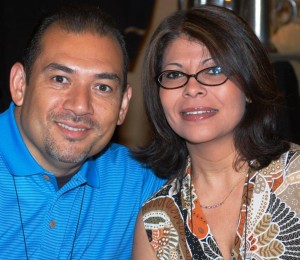

 Cathy’s book is filled with challenging questions and thought-provoking statements. We’re not only learning about the book of James, but about a right way to study all Scripture. On the days we hold the class, attendance is always high. We don’t have a sermon that day, because the book is filled with the good news, and it meets people in their everyday situations.
Cathy’s book is filled with challenging questions and thought-provoking statements. We’re not only learning about the book of James, but about a right way to study all Scripture. On the days we hold the class, attendance is always high. We don’t have a sermon that day, because the book is filled with the good news, and it meets people in their everyday situations.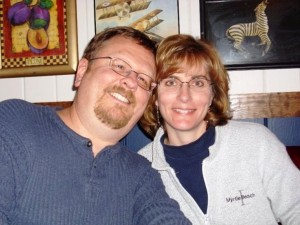
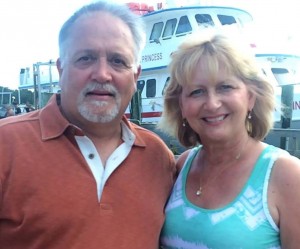
 Pastor Dustin and his team at CFC have started a number of new missions and ministries as a result of their move to their new location. Last fall they sponsored a “pumpkin patch” for several weeks. Not only did they sell pumpkins for the fall season (as a fund raiser), they had several ways they used the patch to meet people in the community and thus make multiple connections. CFC also sponsored an “Outside the Walls” event the last weekend in October, and started an Awana club for children which meets during the week. Dustin and team have gone door-to-door in the immediate community to meet people and find out how they can best serve them. In the story below he shares the result of one of the door-to-door greetings.
Pastor Dustin and his team at CFC have started a number of new missions and ministries as a result of their move to their new location. Last fall they sponsored a “pumpkin patch” for several weeks. Not only did they sell pumpkins for the fall season (as a fund raiser), they had several ways they used the patch to meet people in the community and thus make multiple connections. CFC also sponsored an “Outside the Walls” event the last weekend in October, and started an Awana club for children which meets during the week. Dustin and team have gone door-to-door in the immediate community to meet people and find out how they can best serve them. In the story below he shares the result of one of the door-to-door greetings.
